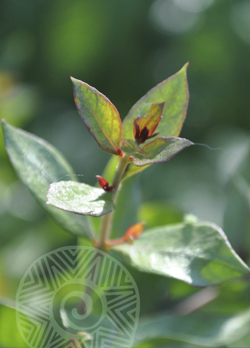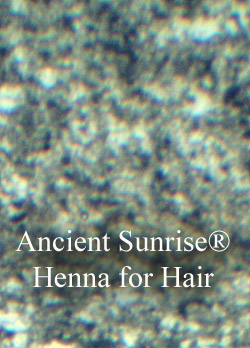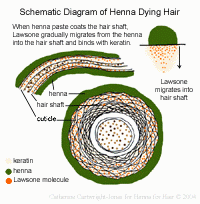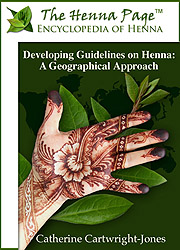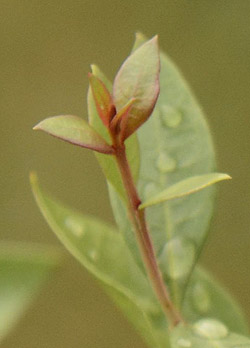|
What is henna?
Henna, lawsonia inermis, is a large bush or small tree native to hot, dry climates across North and East Africa, the Arabian Peninsula, the southern areas of the Middle East, and South Asia. The leaves of the henna plant have been used to dye hair for over five thousand years. Henna probably originated in North Africa, based on the greater genetic diversity in henna in the North African oases than in other regions. Humans probably first developed their use of henna during one of the ‘moist’ phases in the region of the Sahara; the most recent ‘greening’ was from nine thousand to about five thousand years ago. |
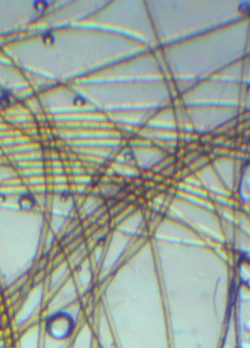 How does green henna powder stain your hair red? Lawsone!
The lawsone will bind to keratin in hair and stain it some tone of red-orange, light coppery orange to dark auburn, depending on the base hair color, keratin structure, and the paste mixture. 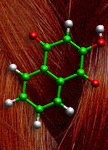 Lawsone Click
HERE or on the image above to find out what Lawsone is, what its size, shape, and characteristics are.
|
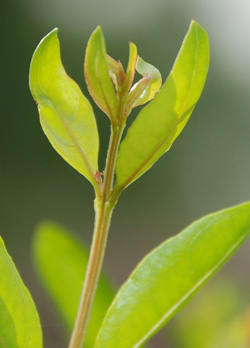 The Botany of Henna Where
and how is henna is grown? Can you grow enough henna in a pot on your
porch to dye your hair? Can you plant henna seeds in your garden and go
into business selling henna?
Click HERE or on the image above to learn about the botany and cultivation of henna. 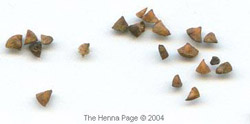 |
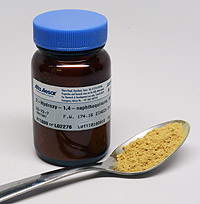 Why
can you not just mix lawsone into shampoo or conditioner and dye your
hair? Acidic hydrolysis and hennocide precursors in the henna leaf are
crucial!
Click HERE and read pages 2 - 6 to learn about the molecular transformation of henna and your hair 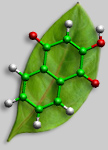 What else is in the different parts of the henna plant, the leaves, roots, stems and bark? To learn more about the phytochemistry of henna, click HERE or on the image above. |
|
What is in all of the boxes of henna on the shelf? How can you identify henna with a microscope? Why is some henna good, some henna crummy, and why do some henna products contain no henna whatsoever? Click HERE or on the image above and read pages 1 - 8 to learn how to identify henna, indigo, and cassia with your microscope. |
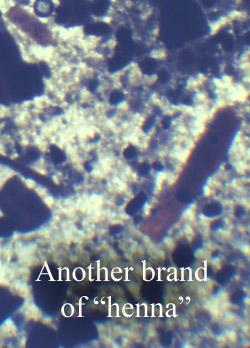 What can microscopy tell you about what is in a package labeled henna? Even
if you get henna from a health food store, there may be little or
no henna in the package, and it may be impossible to work with.
Click HERE or on the image above and read pages 10 - 33 to learn more about what adulterants may be in a box labeled henna. |
|
How does henna dye your hair? Click HERE or on the image above to see exactly how henna dyes your hair. |
|
|
|
Click HERE for more information on the henna plant, how and where it is grown Click HERE to find more information on the Geographies of henna. |
